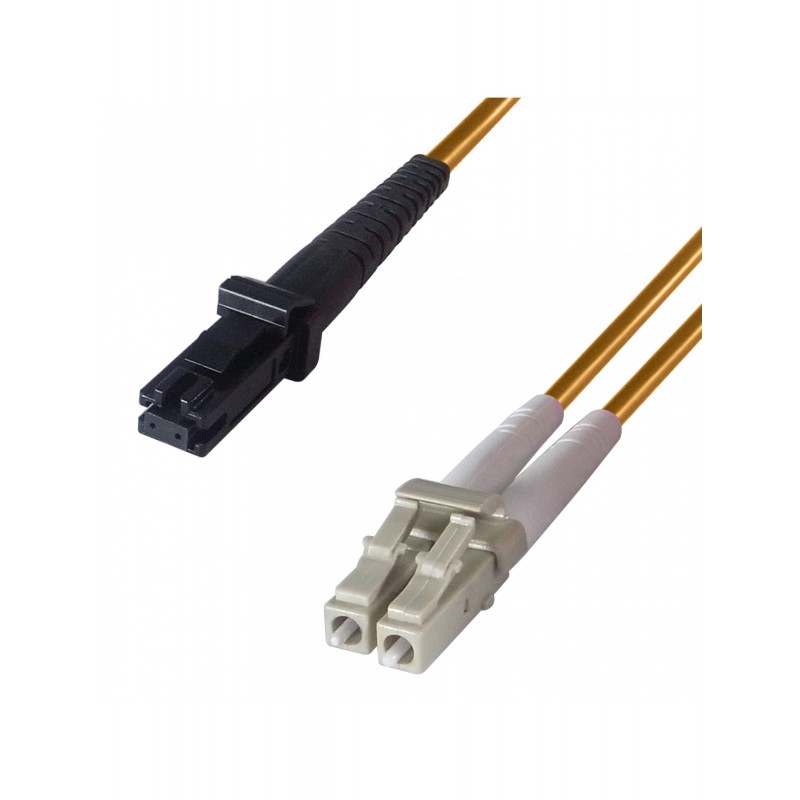Used to connect active components of a fibre optic system usually from the front of a patch panel allowing very high speed communication
- A technology that uses glass threads (fibres) to transmit data
- A fibre optic cable consists of a bundle of glass threads each capable of transmitting messages modulated onto light waves
- Used for hubs and switches to communicate at very high speed
- Fibre optic cables have a much greater bandwidth than metal cables allowing them to carry more data
- Fibre optic cables are less susceptible to interference and alien crosstalk greatly improving noise resistance making an ideal cable for use in EMI (electro-magnetic interference) environments such as factories| power stations| data centres| hospitals etc.
- Fibre optic cables are much lightet and much thinner than metal cables resulting in them taking up less space
- Data can be transmitted digitally (the natural form for computer data) rather than analogically
- LSZH (LS0H): Short for low smoke zero halogen.
- The low smoke aspect means in the event of a fire the cables will melt rather than burn a clear smoke is emitted instead of a very dangerous black smoke.
- The Zero Halogen aspect means most network cables are made with plastic containing Chlorine. In a fire| a halogen-containing plastic material releases a poisonous gas that forms hydrochloric acid when it comes in contact with water. Chlorine -free cables do not produce dangerous gases or acids. This specification of cable would be required for environments such as Schools| Government buildings| MOD etc.
- A flexible moulded collar at the end of the connector protects the internal fibres from any undue stresses or strains
| Cable colour |
Orange |
| Cable length |
2 m |
| Cladding diameter |
125 µm |
| Connector 1 |
MT-RJ |
| Connector 2 |
LC |
| Core diameter |
50 µm |
| Gender |
Male connector/Male connector |
| Jacket material |
Low smoke zero halogen (LSZH) |
| Source data-sheet |
Icecat.biz |



